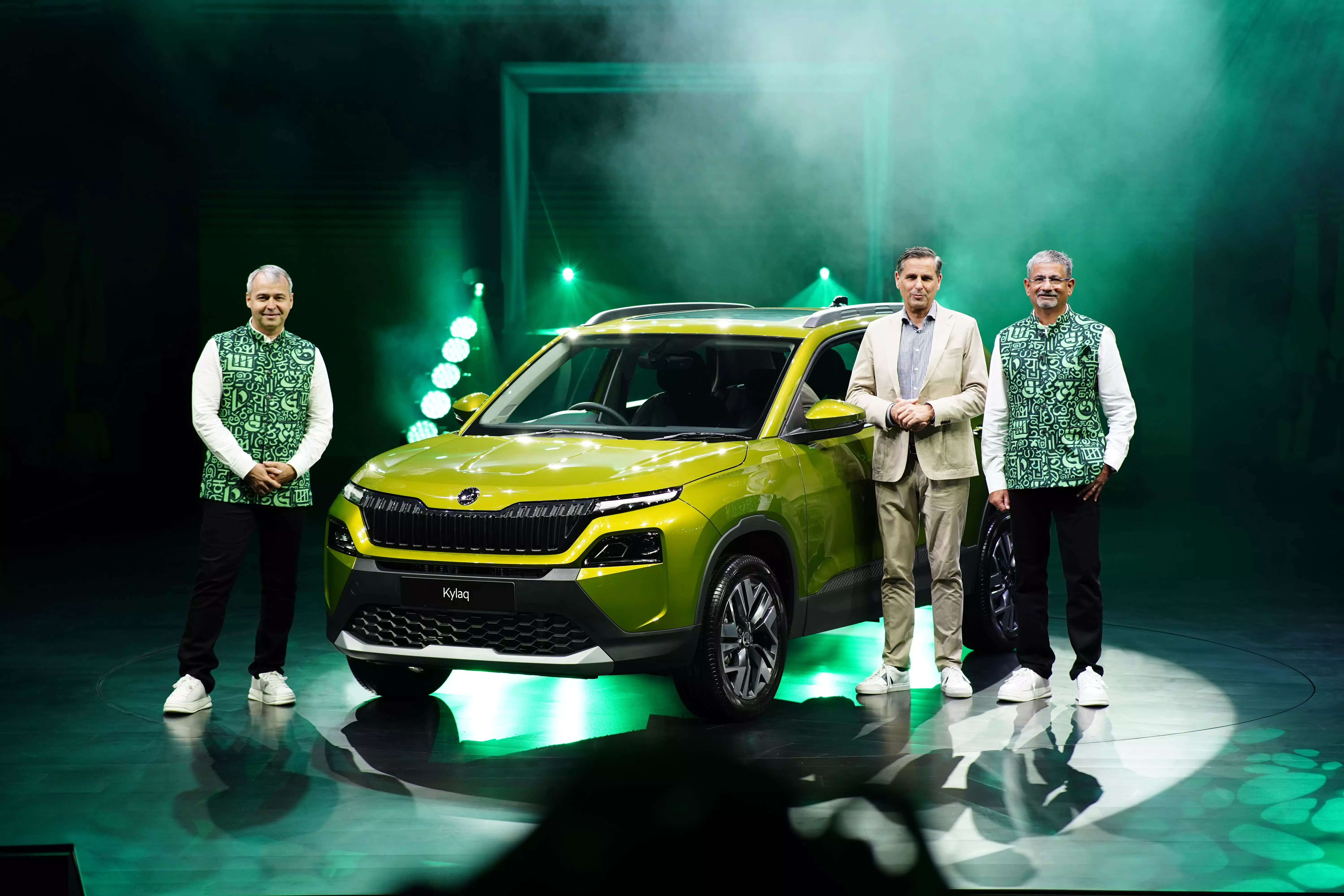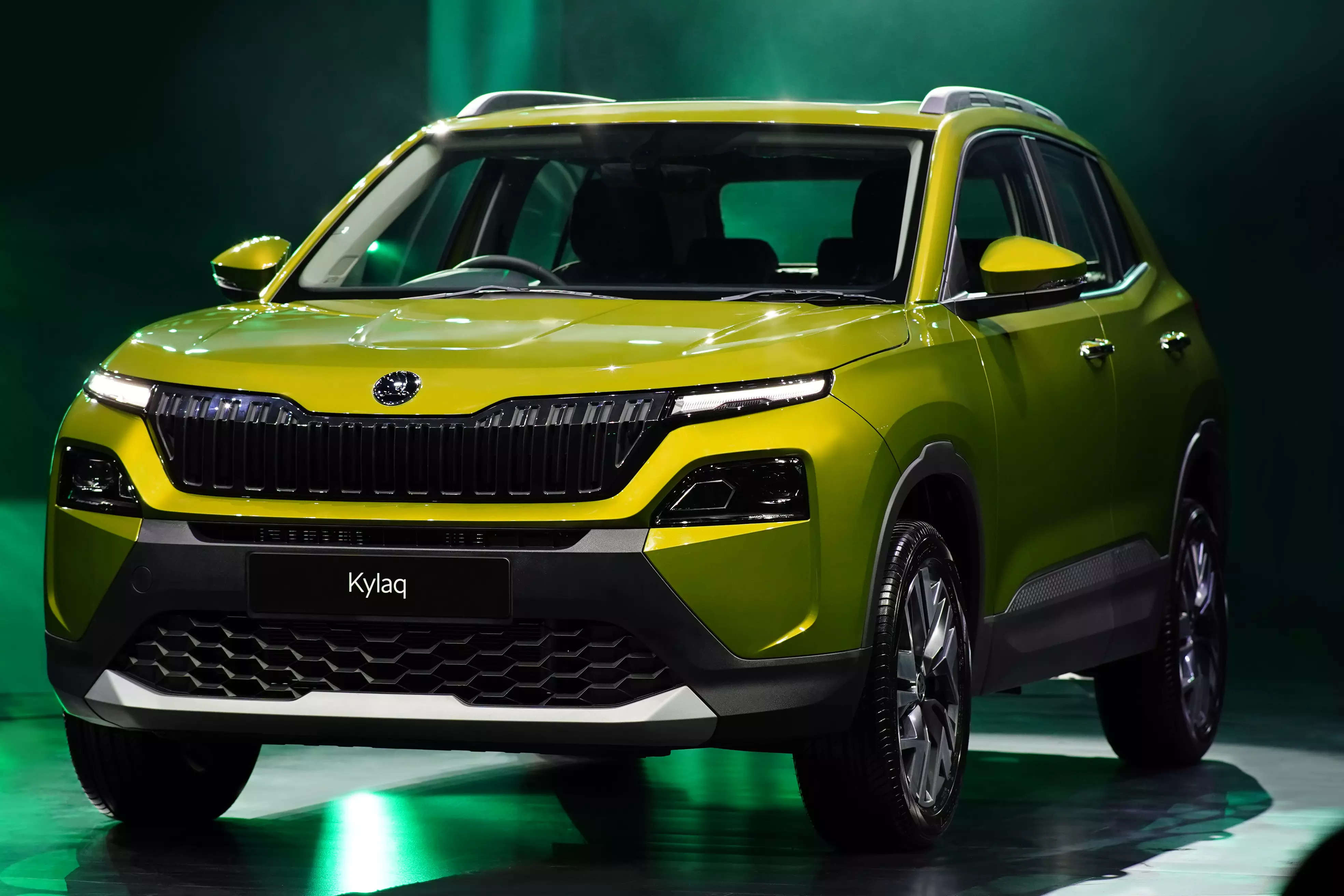
New Delhi: One of the key takeaways for Skoda Auto with Kylaq was the product development process which happened nicely in tandem with the teams in India and Czech Republic headquarters.
“Once we are together in this exercise, it is easy to get things with synergies both fast and cheap. However, if you are developing the vehicle after it (the development) is finished, it takes a little more time and money. We have learnt the lesson and India will become for Skoda not only a strategic market but also an export hub for new products,” Petr Janeba, Brand Director, Skoda Auto India, told ETAuto in a recent interview.
As a case in point, the automaker could have comfortably sold 20,000 Slavias a year in Kazakhstan and Uzbekistan but did not have the package ready in order to cope with conditions prevailing in those regions. Clearly, Skoda had not been planning its export strategy too well in the initial phase of the India 2.0 programme but plans to be “bolder” going forward.
There is “huge demand currently” from other markets because people understand the car as being an ideal entry level model in the Skoda family. These countries include Australia, New Zealand and parts of ASEAN. There is also great interest coming from the the UK even though this platform is not ready for cybersecurity.
India is priority
“India will be top priority till September after which we will take a look at exports. We also need to be more clever next time for the global market since we don’t have a LHD (left-hand-drive) for Kylaq,” said Janeba. The export focus will continue for the new generation Kushaq as well as the electric vehicle that is also planned for India. This time around, the preparatory work is expected to be a lot better with the necessary accompaniments that are specific to certain markets.
The export markets for India-made EVs could include Central Europe too while the numbers for ICE (internal combustion engine) are expected to be quite substantial too. In Europe, there is “this window of opportunity” to change the regulation of EVs in 2027 and this may well happen since automakers are of the view that the transformation exercise will take time.
Meanwhile, Skoda’s Vietnam factory will start Kushaq production in the end of March. The country has a special tax regime under which 7,000 cars need to be readied within six months. July will see Slavia, also shipped out from India, join the lineup in Vietnam and their joint volumes could comfortably be around 8,000 units through the year.
The trade regulations require a certain percentage of local content for shipments within ASEAN and Skoda may explore the possibility of doing this for future projects in India involving despatch of CKD kits. This means trade that follows subsequently, say from Vietnam to other parts of ASEAN, will have fulfilled the local content criterion.
More local content
“For the next generation range (of products), it is a possibility,” said Janeba even though these are early days yet. Should that happen, there could even be more local content in the EV where once again India is tipped to play a pivotal role as a hub. However, all this will only happen only over the next couple of years.
Right now, Kylaq is top priority and the entire Skoda team is pulling out all the stops to ensure that it builds the right connect with customers across India. The company will also be hoping that the recent tax breaks in the Budget, leading to higher disposable incomes among the middle class, will spur buying for Kylaq.
Asked if Indians have a greater comfort level with Japanese and Korean car models when compared to their European counterparts, Janeba said he did not quite subscribe to this theory. “I have had talks (with people) and don’t think there is any reservation about European brands in India. Sure the Japanese were the first movers and put India on wheels,” he responded.
As Janeba explained, this analogy is true for Volkswagen too which was an early bird compared to its European rivals when it came to entering the Chinese market four decades ago. The German automaker has grown from strength to strength over the years even while it has been facing the heat in recent times from BYD which has been surging ahead in China’s electric market.
First mover advantage
As Janeba said, the first movers have both an advantage and “responsibility” when it comes to innovation and other initiatives. The Japanese, similarly, are a formidable force to reckon with in ASEAN where they moved in quickly to grab a share in these right-hand drive nations.
“When it comes to India, you need the scale and should be ready to invest. We did not have the local production strategy from the beginning. Had we had this earlier, we would have probably had a different car parc and this is what it is,” he added matter-of-factly.
Whilst on the subject of European brands, Janeba said people could have some reservations because while the technology is perceived as powerful and state-of-the-art, it is “probably not” appropriate for India. “Maybe they think it is too high and there are fears about fuel. These thoughts are changing with BS VI and people knowing more about quality of fuel,” said Janeba.
Used cars
Regulations have also removed preconceived notions about European car brands. Indians are travelling a lot too which helps them get global exposure to top class cars, he added. Skoda, in its turn, will ensure that all avenues are optimised to boost sales numbers like tapping the fleet segment or used cars.
“Step by step, all these potential areas which were not priority in the past will do receive more attention since volumes are important,” he said. Last year, the exchange penetration was 35% for used cars though this will not increase with Kylaq since it will draw a host of first time buyers.
“We will try and keep it at 30% but from a different volume base with used cars which will flow through our networks,” said Janeba. By the end of the day, the preowned business is an additional turnover for dealers and also helps customers get an affordable Skoda model from an authorised dealership.

















